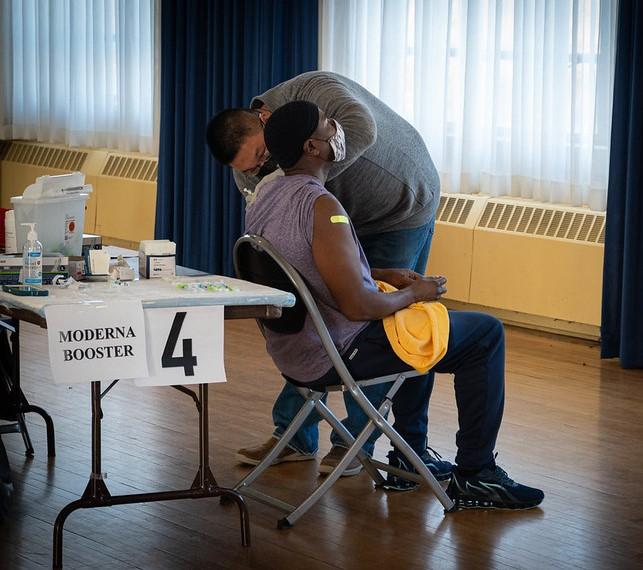Moderna yesterday announced that it has submitted an application to the Food and Drug Administration (FDA) for emergency use of its bivalent (two-strain) COVID booster vaccine that targets the BA.4/BA.5 Omicron subvariants, following a similar move this week from Pfizer and BioNTech.
In other developments, global COVID-19 cases and deaths declined again last week, according to the latest weekly update from the World Health Organization (WHO).
Moderna on track to deliver in September
In a statement, Moderna said its application is for a 50-microgram booster dose for adults ages 18 and older. It targets the original SARS-CoV-2 strain, plus the Omicron BA.4 and BA.5 subvariants.
BA.5 is still the dominant subvariant, and with circulation still at high levels in many parts of the country, US health officials are looking toward more finely-tuned boosters as a way to blunt possible surges in the fall as schools resume and as more people gather indoors.
The Biden administration has signaled that it will offer updated boosters to people ages 12 and older soon after Labor Day, according to the New York Times. The Center for Disease Control and Prevention (CDC) Advisory Committee on Immunization Practices is slated to meet on Sep 1 and Sep 2 to review the data and make recommendations.
As with Pfizer-BioNTech's bivalent booster, which the companies submitted for emergency use authorization (EUA) consideration on Aug 22, Moderna submitted preclinical and manufacturing data, as well as clinical data for the bivalent BA.1 booster that it began developing earlier.
The company said a phase 2/3 trial of the BA.4/BA.5 targeted booster is already under way and that it has rapidly scaled up manufacturing to be ready, if authorized, to deliver doses in September.
In another US development, First Lady Jill Biden is experiencing a rebound COVID-19 infection after taking Paxlovid, her communications director said in a statement, according to NPR. She does not have symptoms and is in Delaware.
President Joe Biden, as one of her contacts, will mask for 10 days when indoors and when near others, based on CDC guidance. Earlier this month, President Biden also experienced a rebound infection after treatment with Paxlovid.
BA.5 descendants increase globally
In its weekly report on the pandemic, the WHO today said cases declined 9% last week, with deaths down by 15% compared to the previous week. Countries reported more than 5.3 million new cases last week, with the most in Japan, South Korea, the United States, Germany, and Russia.
Also, the number of weekly cases declined or were stable across all six WHO regions.
Remaining hot spots include some Asian countries, especially Japan and South Korea. Japan's cases remain high, with 208,551 reported yesterday, and its daily deaths hit a record level, with 343 more fatalities reported, according to Kyodo News. Japan is experiencing its seventh wave of COVID-19 activity.
Meanwhile, South Korea's daily cases topped 100,000 today for the second day in a row, according to the Korea Herald. Officials are cautiously optimistic that cases may have peaked, but they are bracing for a possible resurgence in the fall.
Regarding the global variant picture, the WHO's review of the most recent SARS-CoV-2 sequences show that BA.5 descendent lineages are still dominant, increasing from 71% to 74% over roughly the first half of August. The WHO added that there is increasing diversity among BA.5 lineages, with a rise in prevalence among some of them. Those include BA.5.1 and BA.5.2.
The WHO said BA.2 and BA.4 lineages have been declining for several weeks.
The agency said it continues to track all lineages, including descendant ones, to look for any increases or change in viral characteristics. It urged caution in interpreting trends with Omicron descendant lineages, owing to surveillance system limitations, reduced testing, and fewer sequences shared.




















